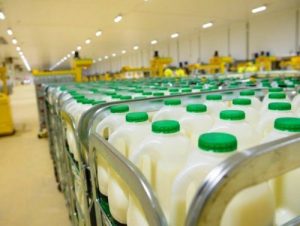Yorkshire region’s productivity on the up but city growth slows

The Yorkshire & Humber region will see overall productivity improve to 2021 and economic growth increase – although there will be a slowdown in cities such as Leeds, Hull and Sheffield – according to a new report.
EY’s annual UK Regional Economic Forecast shows that Yorkshire’s GVA is expected to increase to 1.5% a year by 2021, from 1.3% between 2015 and 2018, driven by private services but constrained by contractions in public sector activity.
The figure places it slightly below UK average growth of 1.7% to 2021 and it sits middle of the pack, along with the North West, in terms of comparative regional performance.
However, the region’s cities of Leeds, Hull and Sheffield will all see GVA growth slow down to 2021. Leeds to 1.8% (2015 to 2018: 2.1%); Sheffield to 1.5% (2015 to 2018: 1.7%); and Hull to 1.2% (2015 to 2018: 2.2%).
The report states that employment growth will be subdued across the country, except for the South East, with an anticipated shift in the labour market over the next few years resulting in the UK average standing at 0.5% growth a year to 2021.
This reflects an overall slowdown in the UK’s economic growth, particularly in the traditionally strong south. The closing of the gap in growth rates between manufacturing and services has been a key factor in shaping the relative levels of change in activity across the UK.
Employment growth in the north will continue to lag behind the UK average over the next three years because it is typically more dependent on the manufacturing and public sectors, which are forecast to see reduced employment levels through to 2021. The North East (0.1%), Yorkshire and Humberside, Wales and South West (all 0.4%) are forecast to be the regions with the slowest employment growth per year up to 2021.
Manufacturing has grown over the last three years and employment has increased as a result. Regions with a large manufacturing base, including Yorkshire, enjoyed a particular boost last year, with the weaker sterling making exports more competitive.
However, more subdued growth is expected for these regions in 2018 to 2021, as sterling strengthens and global demand cools, amid a backdrop of more protectionist policies and also as technology is used to drive higher productivity in a more challenging labour market.
In Yorkshire’s cities, Leeds employment growth is expected to reduce to 0.7% a year (from 1.6% in 2015 to 2018), contributing a total of 10,300 additional jobs to 2021. The professional, scientific & technical sectors, and wholesale & retail sectors will continue to increase their dominant share of employment in the city.
Sheffield and Hull are forecast to see employment growth slow to 0.4% (from 0.8%) and 0.1% (from 2.0%) a year to 2021 respectively, as lower immigration impacts manufacturing sector growth.
The report adds that a slowdown in the retail sector, especially on the high street, also poses significant challenges for smaller towns and communities as retail tends to be a major employer in these locations.
Suzanne Robinson, EY’s Managing Partner for Yorkshire, said: “EY’s report warns that across the rest of the UK, imbalances in growth between different places within regions will continue to increase, with cities and larger towns pulling away from their smaller neighbours.
“However, the positive GVA growth forecast for Yorkshire demonstrates the diversity of our economy, with strengths in technology, professional and financial services, as well as the geographic spread of these businesses. This makes our overall economy much more resilient with balanced growth that is not confined to cities.
“But the pace of change in the make-up of our economy gives no room for complacency. There is still a need to reskill our labour market and focus on the huge opportunity presented by digital and technology.”
Across the UK, growth is set to be more geographically balanced over the next three years. Sunderland (1.1%), Teesside and Hull (both 1.2%) make up the bottom three performing urban areas by GVA growth per year. However, at 1.2% the gap forecast between the fastest and slowest growing cities over the next three years will be significantly less than from 2015-18 (3.5%).
Despite the growth gap getting closer between the fastest and slowest growing cities, the report says that smaller locations are falling further behind. Core Cities in the forecast (London, Leeds, Manchester, Liverpool, Newcastle, Birmingham, Cardiff and Bristol) are expected to grow at 1.8% annually on average between 2015 and 2018 and Large Towns are expected to grow by 1.6%. In contrast, smaller locations are forecast to grow by just 1.5%.
Director of the Northern Powerhouse Partnership Henri Murison said: “The importance of the Northern Powerhouse is that its great cities and their wider metro economic regions would be much more productive if better linked together. This is why Northern Powerhouse Rail and HS2 are so important. These figures could and should be higher if we could transform the underlying productivity of the North, including through investing more in skills and apprenticeships alongside the transformative opportunity of the next industrial revolution to digitalise manufacturing, energy and use data better to close inequalities in health.
“Leeds and its wider city region including Bradford feature prominently in the cities with growth rates to watch. Channel 4 sensibly chose here for their base, and many others are doing the same as shown by key developments like Platform by Bruntwood being occupied so quickly including by major inward investors.
“A commitment to Northern Powerhouse Rail will be vital to ensure not only that HS2 brings confidence to the South Bank but that we start seeing investment in Bradford before we build a new station in the city centre – creating a vibrant new commercial district.”








